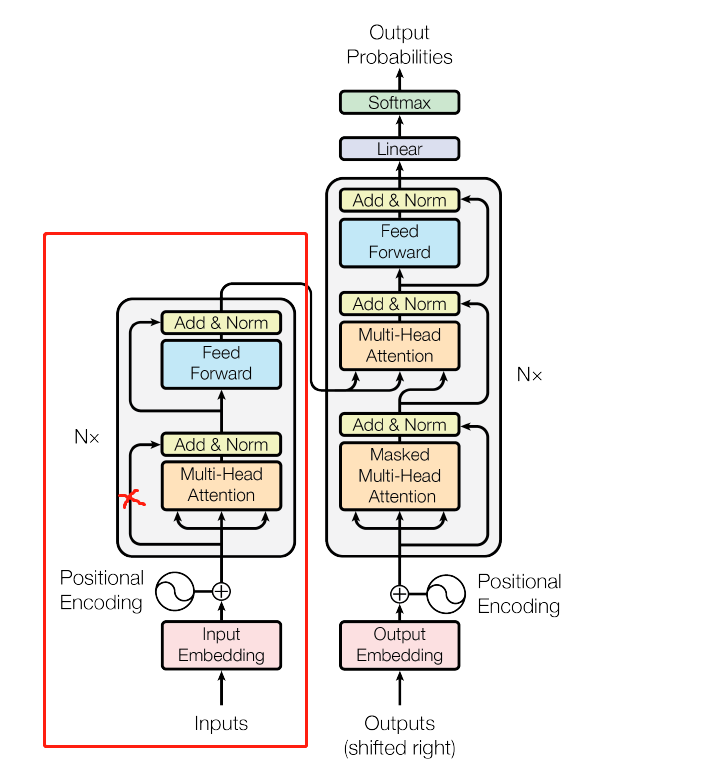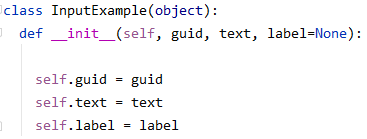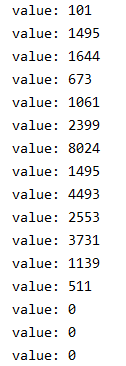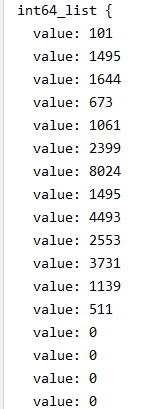本篇解读了基于BERT+CRF做中文NER这篇文章中的代码,在该篇作者的GitHub上可以下载源码:源代码。这段代码对BERT模型的实现较为简洁,删掉了谷歌源代码中我们可能用不到的部分,保留了核心部分。对于那些想要快速上手BERT的同学是非常好的学习机会,在看懂这个之后再去学习谷歌的源代码会更加轻松,本篇将尽量详细的对代码进行解读,看完之后如果有合适的数据集就可以自己运行起来了,建议先从原作者的GitHub上把代码下载下来对照着看,数据集也包含在其中。
BERT-CRF模型
之前有写过BERT模型和CRF模型的详解,建议往下看之前一定一定要了解这两个模型的原理和工作过程:结合原理和代码来理解bert模型、结合原理与代码理解BiLSTM-CRF模型(pytorch),因为本篇对代码的解读较为详细,如果不清楚BERT模型的原理和工作过程,可能有些地方会很晕。在结合原理和代码来理解bert模型这篇中我也是解读了一个pytorch实现的BERT代码,那段代码更加简洁,只实现了BERT的核心部分,本篇解读的代码基于TensorFlow,会更加接近谷歌的源码。
BERT-CRF与BiLSTM-CRF模型较为相似,其本质上还是一个CRF模型,只不过是用BERT模型来训练CRF模型中的发射矩阵。这个发射矩阵可以用BILSTM来训练,也可以随机初始化训练,但是实际效果都没有BERT好。我自己的NER数据有10多个实体类别,5000个句子,使用这段代码来训练,最终准确度大概为96%。本篇将会把重点放在BERT模型上,代码保留了谷歌源码中的modeling.py、optimization.py、tokenization.py,将run_classifier.py进行了修改,剩下的全部删除,并且调用了谷歌预训练好的模型,接下来会依次介绍代码中的几个模块。
Embedding
modeling.py这个文件中定义了BERT模型,主要包括两部分:Embedding和transformer。Embedding用来随机初始化词向量,transformer即BERT模型的主体。
首先介绍与Embedding相关的两个函数:
(1)embedding_lookup
这个函数用来随机生成初始的词向量。函数的参数包括,input_ids:输入序列中每个字在词表中的的索引;vocab_size:词表大小,embedding_size:每个词向量的维度,initializer_range:随机生成正态分布词向量的标准偏差,use_one_hot_embedding:是否使用独热编码。最后返回的是词表中所有词的词向量和输入序列的词向量。
if input_ids.shape.ndims == 2:
input_ids = tf.expand_dims(input_ids, axis=[-1])
函数默认输入的是维度为(batch_size,seq_len,input_num)的矩阵,也就是说可以一次输入多个句子。如果只输入了一个句子,即输入矩阵维度为(batch_size,seq_len),那么首先将其维度扩充为(batch_size,seq_len,1)。
embedding_table = tf.get_variable(
name=word_embedding_name,
shape=[vocab_size, embedding_size],
initializer=create_initializer(initializer_range))然后使用get_variable函数来初始化词表的词向量,维度为(vocab_size,embedding_size)。初始化的方式在create_initializer方法中,该方法调用了TensorFlow中的truncated_normal_initializer函数,传了一个initializer_range参数,该函数可以生成截断正态分布的初始化矩阵,若某个值超出了initializer_range的范围,则将其丢弃重新生成。
flat_input_ids = tf.reshape(input_ids, [-1])
if use_one_hot_embeddings:
one_hot_input_ids = tf.one_hot(flat_input_ids, depth=vocab_size)
output = tf.matmul(one_hot_input_ids, embedding_table)
else:
output = tf.gather(embedding_table, flat_input_ids)现在已经有了词表的词向量,我们只需要通过input_ids中的索引,来提取出词向量表中对应位置的词向量即可。首先将input_ids化为一维数组形成索引列表,然后判断是否使用独热编码,在本篇中不使用。gather函数的工作过程就是:将第一个参数看作一张表,第二个参数看成一个索引列表,通过索引来抽取出表中对应位置的数据。这个函数可以帮我们从刚才生成的词向量表中抽取出input_ids位置的词向量,而且此时抽取出的矩阵维度为(batch_size*seq_len,embedding_size),还要将维度进行转换。
input_shape = get_shape_list(input_ids)
output = tf.reshape(output, input_shape[0:-1] + [input_shape[-1] * embedding_size])
return (output, embedding_table)这两句的目的就是将output转换为(batch_size,seq_len,embedding_size)维度的矩阵。最后返回词向量表和输入序列的词向量。
(2)embedding_postprocessor
这个函数的目的是对上个函数生成的初始词向量做进一步处理,添加序列的type信息和position信息。函数参数包括,input_tensor:输入序列的词向量,也就是上个函数输出的output,use_token_type:是否添加字的type信息,也就是要区分第一句话和第二句话,token_type_ids:输入序列中每个字的type_id,维度是(batch_size,seq_len),也就是预处理时生成的segment_id,第一句为0,第二句为1,token_type_vocab_size:一共有多少种type,这里虽然默认是16,但实际输入的是2,use_position_embeddings:是否添加字的位置信息,initializer_range:权重初始化的范围,与上个函数的该参数作用一致,max_position_embedding:位置Embedding的最大长度,不能比max_seq_len小,dropout_prob:最后输出张量时的丢弃比例。函数返回的还是词向量,与上个函数返回的output维度一致。
input_shape = get_shape_list(input_tensor, expected_rank=3)
batch_size = input_shape[0]
seq_length = input_shape[1]
width = input_shape[2]
output = input_tensor首先把输入矩阵的维度取出来,方便下一步操作。
if use_token_type:
if token_type_ids is None:
raise ValueError("`token_type_ids` must be specified if"
"`use_token_type` is True.")
token_type_table = tf.get_variable(
name=token_type_embedding_name,
shape=[token_type_vocab_size, width],
initializer=create_initializer(initializer_range))
# This vocab will be small so we always do one-hot here, since it is always
# faster for a small vocabulary.
flat_token_type_ids = tf.reshape(token_type_ids, [-1])
one_hot_ids = tf.one_hot(flat_token_type_ids, depth=token_type_vocab_size)
token_type_embeddings = tf.matmul(one_hot_ids, token_type_table)
token_type_embeddings = tf.reshape(token_type_embeddings,
[batch_size, seq_length, width])
output += token_type_embeddings如果要添加字的type信息,首先要对两种type_id(0,1)进行初始化编码,得到的token_type_table维度为(2,768)。然后将输入的token_type_ids变化为一维的(batch_size*seq_len),此时生成的flat_token_type_ids中只有0和1,表示每个字的type_id。此时将其生成独热编码,实际上是对0和1进行独热编码,0编码为(1,0)、1编码为(0,1),生成的one_hot_ids维度为(batch_size*seq_len,2)。然后one_hot_ids和token_type_table相乘,就可以得到每个词对应的type_id的编码,维度为(batch_size*seq_len,768)。这里非常巧妙地使用了独热编码来加速运算,建议好好思考一下。最后将type_id信息加到词向量中,进行下一步添加位置信息。
if use_position_embeddings:
assert_op = tf.assert_less_equal(seq_length, max_position_embeddings)
with tf.control_dependencies([assert_op]):
full_position_embeddings = tf.get_variable(
name=position_embedding_name,
shape=[max_position_embeddings, width],
initializer=create_initializer(initializer_range))
position_embeddings = tf.slice(full_position_embeddings, [0, 0],
[seq_length, -1])
num_dims = len(output.shape.as_list())
# Only the last two dimensions are relevant (`seq_length` and `width`), so
# we broadcast among the first dimensions, which is typically just
# the batch size.
position_broadcast_shape = []
for _ in range(num_dims - 2):
position_broadcast_shape.append(1)
position_broadcast_shape.extend([seq_length, width])
position_embeddings = tf.reshape(position_embeddings,
position_broadcast_shape)
output += position_embeddings如果要添加位置信息,首先对所有位置生成一个初始化向量,维度为(max_position_embeddings,768)。因为我们实际运算时句子长度不会达到max_position_embeddings,所以做个切片操作,只取(seq_length,768)的矩阵即可。然后将这个初始化向量的维度扩充为(1,seq_length,768),再与output相加,不同维度的矩阵相加时会先自动扩充成相同维度。
函数末尾对output进行layer_norm和dropout操作,然后返回,这块就不解释了。经过这两个函数,我们就已经得到了BERT模型的第一部分词向量,然后就是transformer部分。
Transformer
这部分是BERT模型的主体,实际上是transformer中的Encoder,在modeling.py文件定义了两个方法attention_layer和transformer_layer,实现了transformer结构,下面介绍这两个方法。
(1)attention_layer
这个函数主要实现了Encoder中Multi-Head-Attention的部分,主要参数如下,from_tensor,to_tensor:这两个参数是输入的词向量,在我们的程序中是相同的,表示self-Attention。attention_mask:标注序列中哪些位置是无效的pad,不需要参与计算。num_attention_head表表示self-Attention的个数,多个self-Attention组合成最终输出。size_per_head:表示每个self-Attention要处理的向量维数,也就是特征数。query_act、ket_act、value_act:表示Q、K、V矩阵的激活函数。attention_probs_dropout_prob:表示dropout的比例。initializer_range:表示初始化向量的范围。do_return_2d_tensor:是否返回2维的tensor,如果是则返回(batch_size*from_seq_length,num_attention_head*size_per_head)的矩阵。
nun_attention_head乘size_per_head一定是768,所以可以看出每个self-Attention都承担了一部分的词向量,最后再组合成完整的768维词向量。
函数的开头定义了一个函数,transpose_for_score,这个函数用于将输入矩阵的维度从(batch_size*seq_len,768)转换为(batch_size,seq_len,num_attention_head,size_per_head),然后再转换为(batch_size,num_attention_head,seq_len,size_per_head)。这个函数实现比较简单,容易理解。之后获取了两个输入矩阵的维度,并做了一些异常处理。
from_tensor_2d = reshape_to_matrix(from_tensor)
to_tensor_2d = reshape_to_matrix(to_tensor)
# `query_layer` = [B*F, N*H]
query_layer = tf.layers.dense(
from_tensor_2d,
num_attention_heads * size_per_head,
activation=query_act,
name="query",
kernel_initializer=create_initializer(initializer_range))将输入的两个矩阵转换为二维矩阵,之后使用dense函数定义了Q、K、V矩阵,这里的QKV矩阵维度为(batch_size*seq_len,768)。
query_layer = transpose_for_scores(query_layer, batch_size, num_attention_heads, from_seq_length, size_per_head)
key_layer = transpose_for_scores(key_layer, batch_size, num_attention_heads, to_seq_length, size_per_head)然后将Q、K矩阵的维度变换为(batch_size,num_attention_head,from_seq_len,size_per_head),也就是将768维的词向量分给多个self-Attention来处理,最后结合到一起。
attention_scores = tf.matmul(query_layer, key_layer, transpose_b=True)
attention_scores = tf.multiply(attention_scores, 1.0 / math.sqrt(float(size_per_head)))这里也是常规操作了,公式如下:

if attention_mask is not None:
attention_mask = tf.expand_dims(attention_mask, axis=[1])
adder = (1.0 - tf.cast(attention_mask, tf.float32)) * -10000.0
attention_scores += adder
attention_probs = tf.nn.softmax(attention_scores)在进行softmax操作前,要判断是否要丢弃掉补pad的位置,将补pad位置的得分设置为一个很小的负数,而不是pad的位置就设置为0,这样在softmax时可以消除影响。
attention_probs = dropout(attention_probs, attention_probs_dropout_prob)
value_layer = tf.reshape(
value_layer,
[batch_size, to_seq_length, num_attention_heads, size_per_head])
value_layer = tf.transpose(value_layer, [0, 2, 1, 3])
context_layer = tf.matmul(attention_probs, value_layer)在进行drop操作之后,将V矩阵做与Q、K矩阵相同的维度变换,然后相乘得到Attention_score,这样就完成了上面公式中的全部内容。接下来就是将结果的维度变换回(batch_size,seq_len,768)的形式,然后返回即可。
(2)transformer_model
这个函数调用了上面定义好的Multi-Head-Attention,封装好了transformer结构。主要参数如下,input_tensor:输出的初始词向量。attention_mask:输入序列的mask信息,即标出了哪些位置是无效的pad。hidden_size:词向量的维度。num_hidden_layer:模型中所包含的Encoder的个数。num_attention_head:一个Encoder中self-Attention的个数。intermediate_size:全连接层的维度,就是feedforward那部分。intermediate_act_fn:全连接层使用的激活函数。do_return_all_layer:是否返回每一层Encoder输出的结果。函数返回的是transformer最后一层的输出,维度为(batch_size,seq_len,768)。
函数首先做了一下异常处理和变量的初始化。然后开始计算每一层Encoder的输出。
prev_output = reshape_to_matrix(input_tensor)
all_layer_outputs = []
for layer_idx in range(num_hidden_layers):
with tf.variable_scope("layer_%d" % layer_idx):
layer_input = prev_output从这里我们可以看出,每一层Encoder输入的都是一个二维矩阵,第一层Encoder都使用初始词向量,之后每层使用的是上一层的输出词向量,并且每一层的输出都保存了下来。
with tf.variable_scope("self"):
attention_head = attention_layer(
from_tensor=layer_input,
to_tensor=layer_input,
attention_mask=attention_mask,
num_attention_heads=num_attention_heads,
size_per_head=attention_head_size,
attention_probs_dropout_prob=attention_probs_dropout_prob,
initializer_range=initializer_range,
do_return_2d_tensor=True,
batch_size=batch_size,
from_seq_length=seq_length,
to_seq_length=seq_length)
attention_heads.append(attention_head)
attention_output = None
if len(attention_heads) == 1:
attention_output = attention_heads[0]
else:
attention_output = tf.concat(attention_heads, axis=-1)这一部分就是将得到Multi-Head-Attention的输出,虽然代码中定义了一个列表,但实际上我们只输入一个序列,列表中也一直都只有一个矩阵,所以可以忽略那个列表和拼接操作。
with tf.variable_scope("output"):
attention_output = tf.layers.dense(
attention_output,
hidden_size,
kernel_initializer=create_initializer(initializer_range))
attention_output = dropout(attention_output, hidden_dropout_prob)
attention_output = layer_norm(attention_output + layer_input)接下来对Multi-Head-Attention的输出进行了线性投影,一个全连接层,再做dropout、残差连接、归一化,也是常规操作了。
with tf.variable_scope("intermediate"):
intermediate_output = tf.layers.dense(
attention_output,
intermediate_size,
activation=intermediate_act_fn,
kernel_initializer=create_initializer(initializer_range))接下来又连接了一个全连接层,即feedforward部分,在这里中768维的词向量被映射到了更高维度上(3072)。
with tf.variable_scope("output"):
layer_output = tf.layers.dense(
intermediate_output,
hidden_size,
kernel_initializer=create_initializer(initializer_range))
layer_output = dropout(layer_output, hidden_dropout_prob)
layer_output = layer_norm(layer_output + attention_output)
prev_output = layer_output
all_layer_outputs.append(layer_output)最后就是继续全连接层,映射回768维,然后dropout、残差连接、归一化,得到本层Encoder的输出,更新输入词向量,保存结果,也是常规操作了。结合下面Encoder层的结构图应该可以更好地理解这一过程:

到这里BERT模型的两大部分就定义完了,接下来我们就该实现BERT模型的配置和组装了。
BERT
BERT模型的构建主要是由modeling.py文件中BertModel类和BertConfig类完成的。其中BertConfig类中实现了读取BERT模型配置文件的方法,并且初始化了BERT模型的参数,就不多讲了。
BertModel类读取了BertConfig类中初始化的模型参数,接收输入的序列信息,类的重点在其初始化函数中,初始化函数组装了上面讲的两大部分,获取到了最终的输出。类中初始化函数的主要参数如下,config:模型的配置参数。is_training:是否在训练状态。nput_ids:输入序列中的字在此表中的索引,维度为(batch_size,seq_len)。input_mask:输入序列中要mask的位置,即不需要参与计算的位置。token_type_ids:输入序列的type信息。函数最后得到了transformer的输出,和每个序列中第一个词的输出,也就是CLS的词向量,可以用来进行文本分类。函数开头的一些初始化操作就不再提了,直接进入正题。
with tf.variable_scope("embeddings"):
(self.embedding_output, self.embedding_table) = embedding_lookup(
input_ids=input_ids,
vocab_size=config.vocab_size,
embedding_size=config.hidden_size,
initializer_range=config.initializer_range,
word_embedding_name="word_embeddings",
use_one_hot_embeddings=use_one_hot_embeddings)
self.embedding_output = embedding_postprocessor(
input_tensor=self.embedding_output,
use_token_type=True,
token_type_ids=token_type_ids,
token_type_vocab_size=config.type_vocab_size,
token_type_embedding_name="token_type_embeddings",
use_position_embeddings=True,
position_embedding_name="position_embeddings",
initializer_range=config.initializer_range,
max_position_embeddings=config.max_position_embeddings,
dropout_prob=config.hidden_dropout_prob)与我介绍的顺序一致,函数中首先对输入序列生成了初始化词向量,对词向量做了补充操作,添加了type信息和位置信息,传入的参数只要能明白作用是什么就好。这段中我们得到了初始词向量self.embedding_output。
with tf.variable_scope("encoder"):
attention_mask = create_attention_mask_from_input_mask(
input_ids, input_mask)
self.all_encoder_layers = transformer_model(
input_tensor=self.embedding_output,
attention_mask=attention_mask,
hidden_size=config.hidden_size,
num_hidden_layers=config.num_hidden_layers,
num_attention_heads=config.num_attention_heads,
intermediate_size=config.intermediate_size,
intermediate_act_fn=get_activation(config.hidden_act),
hidden_dropout_prob=config.hidden_dropout_prob,
attention_probs_dropout_prob=config.attention_probs_dropout_prob,
initializer_range=config.initializer_range,
do_return_all_layers=True)接着调用了transformer结构,使用刚才生成的self.embedding_output作为输入,得到了每一层Encoder的输出。其他参数能看懂作用是什么就行,注意这里do_return_all_layers设置为True。至于create_attention_mask_from_input_mask这个名字巨长的函数,可以不看,想想就知道是要生成mask矩阵。这段我们得到了transformer中每一层的输出self.all_encoder_layers。
self.sequence_output = self.all_encoder_layers[-1]这句话用来提取出transformer最后一层的输出,也就是BERT模型的输出词向量,定义为self.sequence_output。
with tf.variable_scope("pooler"):
first_token_tensor = tf.squeeze(self.sequence_output[:, 0:1, :], axis=1)
self.pooled_output = tf.layers.dense(
first_token_tensor,
config.hidden_size,
activation=tf.tanh,
kernel_initializer=create_initializer(config.initializer_range))这段的作用就是刚才所说的,提取出每个句子中第一个位置CLS的词向量,因为经过transformer后,CLS中包含了整个句子的信息,可以用它来进行句子级的分类任务。这里的self.pooled_output的维度为(batch_size,768)。
到这里整个BERT模型的构建就完成了,modeling.py文件中的内容也介绍的差不多了,接下来就该到run_ner.py文件中准备数据,训练模型,实现NER了。
准备数据
代码中有一个tokenizer.py文件,其中定义了许多处理原始数据的方法,包括大小写转换、Unicode转换、token和id的索引。这个文件中的代码还是较为容易理解的,有一定的python基础就能看懂,在用的时候只需要知道输入输出是什么就可以了。
数据准备还涉及到run_ner文件中多个类和方法,下面逐个介绍。首先看一下训练集和测试集的格式:

每行对应一个字及其分类,一个空行表示一个句子的结束。我们将会把这种形式的数据进行一步步的处理,最终生成适用于模型的输入数据,下面介绍从原始数据到模型输入数据的处理过程
(1)NerProcessor类
这个类主要就是定义了读取训练集、测试集和标签集的方法,这三个方法本身较为简单,调用了DataProcessor类中的read_data方法也容易理解。类中还定义了一个create_example方法,调用了InputExample类来将一个句子的字序列和标签序列封装起来。InputExample类包含了一个句子的ID、子序列、标签序列:

所以这个类的作用就是,将训练集和测试集中的每个句子都封装成一个InputExample实例,然后返回。这个类的实现较为简单,我们只需要知道处理完之后的数据格式即可,例如:
![]()
(2)convert_single_example
这个方法用于将一个InputExample类的数据转换为一个InputFeature类的数据。函数的主要参数如下,ex_index:当前这个InputExample的索引。example:当前传入的一个InputExample实例。label_list:所有标签的集合。max_seq_len:句子的最大长度,其实也就是要把所有句子统一到这个长度。tokenizer:原始数据解析器。函数返回一个InputFeature实例。
InputFeature类的属性包含句子的各种信息,接下来我们就要对InputExample实例进行解析,得到下面这些属性:

label_map = {}
for (i,label) in enumerate(label_list):
label_map[label] = i
with open(FLAGS.output_dir+"/label2id.pkl",'wb') as w:
pickle.dump(label_map,w)函数首先给所有标签设置了一个索引,然后将这个map形式的标签集保存到文件中,方便之后调用。
textlist = example.text.split(' ')
labellist = example.label.split(' ')#在这里进行切分,之前都是字符串
tokens = []
labels = []
for i,(word,label) in enumerate(zip(textlist,labellist)):
tokens.append(word)
labels.append(label)因为在InputExample中,token和label是将每个字或标签用空格连接形成的字符串,所以函数要将一个InputExample中的token和label进行切分,得到一个列表形式的token和label。此时的tokens中保存的是一句话中的每个字,labels中保存的是一句话中每个字的标签。
ntokens.append("[CLS]")
segment_ids.append(0)
label_ids.append(label_map["[CLS]"])
for i, token in enumerate(tokens):
ntokens.append(token)
segment_ids.append(0)
label_ids.append(label_map[labels[i]])
input_ids = tokenizer.convert_tokens_to_ids(ntokens)
mask = [1]*len(input_ids)在这里给每句话添加了CLS,且NER问题不需要两句话的拼接,所以也用不到SEP。添加CLS后,segment_ids序列中也要加上CLS对应的0。这个for循环生成了句子最终的token序列、segment_ids、label_ids。接着调用了tokenizer中的一个方法,这个方法其实也不用去细看,只需要知道他根据生成的token序列返回了句子的input_ids即可。mask序列也就可以根据input_ids的长度来填充1了。
while len(input_ids) < max_seq_length:
input_ids.append(0)
mask.append(0)
segment_ids.append(0)
label_ids.append(0)#label_map["[PAD]"]==0
ntokens.append("[PAD]")紧接着为了统一句子长度,给每个长度不足max_seq_len的句子末尾填充一些0。到这里,InputFeature类所需要的信息都已经准备好了,最后封装起来返回即可,格式大致如下,长度不足的后面全补了0。

(2)filled_based_convert_examples_to_features
这个方法调用了上面的convert_single_example方法,先将所有InputExample类数据转换为InputFeature类数据,然后转换为为TensorFlow中特有的Example型数据,最后保存到tf_record型文件中。tf_record文件是TensorFlow推荐使用的一种二进制文件,理论上可以保存任何数据。
函数的主要参数如下:examples:所有的InputExample类数据。label_list:数据集中存在的所有标签类别。max_seq_len:句子的最大长度。tokenizer:数据预处理的解析器。output_file:生成的tf_record文件保存的位置。
def create_int_feature(values):
f = tf.train.Feature(int64_list=tf.train.Int64List(value=list(values)))
return f在函数中定义的这个create_int_feature函数是核心内容,他接收了一个列表,并将其转换为TensorFlow中的Feature型数据。首先,tf.train.Int64List(value=list(values))将列表转换为了“value:data”形式的数据,例如:

然后tf.train.Feature(int64_list=tf.train.Int64List(value=list(values)))将上面的“value:data”形式的数据封装起来,看作是一个特征集,变成下面这个样子:

features = collections.OrderedDict()
features["input_ids"] = create_int_feature(feature.input_ids)
features["mask"] = create_int_feature(feature.mask)
features["segment_ids"] = create_int_feature(feature.segment_ids)
features["label_ids"] = create_int_feature(feature.label_ids)这里就是在给每个信息构建特征集,features是一个字典,而且其中元素的顺序与输入的顺序一致。现在我们得到了特征名到特征集的字典,然后就可以将他们组合起来,创建一个多种类型的特征集,即多个feature的集合。
tf_example = tf.train.Example(features=tf.train.Features(feature=features))
首先tf.train.Features(feature=features)会将多个Feature型的数据组合成一个Features型的数据,然后再调用Example模块形成一个Example形式的数据。
处理过程总结一下就是:list -> Int64List -> Feature -> Features -> Example。多输出几次中间变量就可以明白这个过程了。
writer.write(tf_example.SerializeToString())在最后将这个Example型数据转换为字符串写入文件中即可。
到这里数据准备就已经完成了,接下来就是调用输入函数进行训练即可,每次向模型中输入一个batch的数据。
























 811
811











 被折叠的 条评论
为什么被折叠?
被折叠的 条评论
为什么被折叠?








